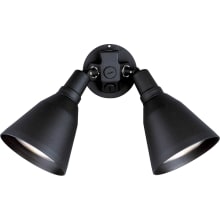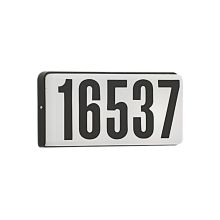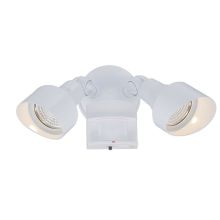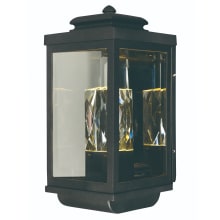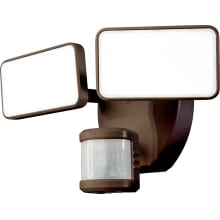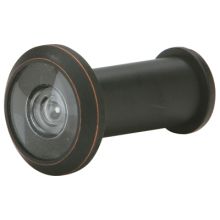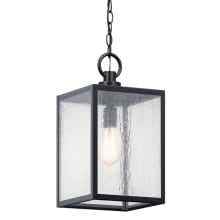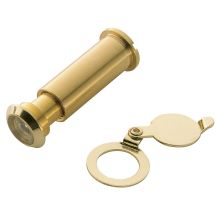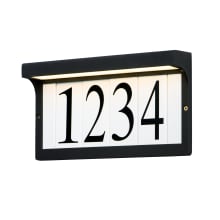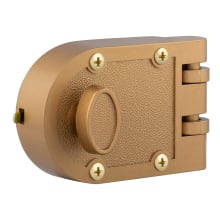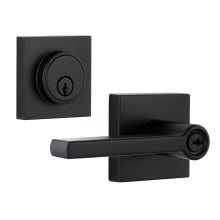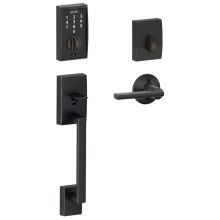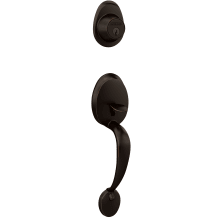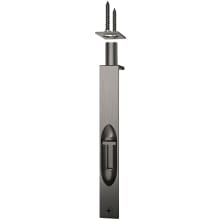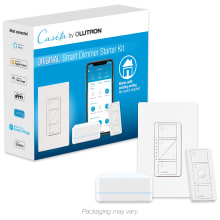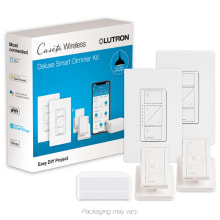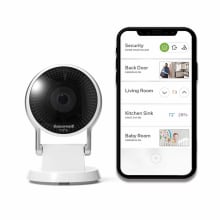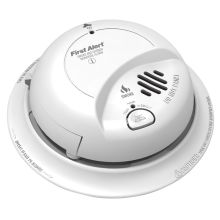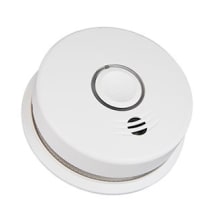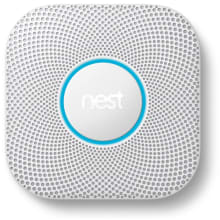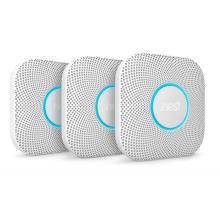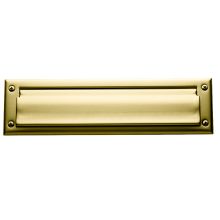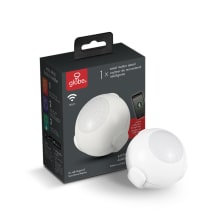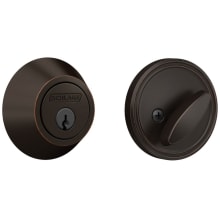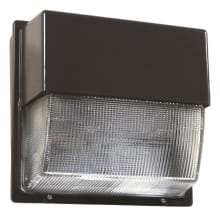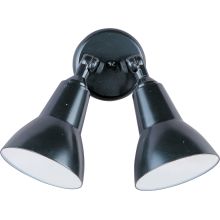Your Home Security Guide
Learn how to protect your home inside and out
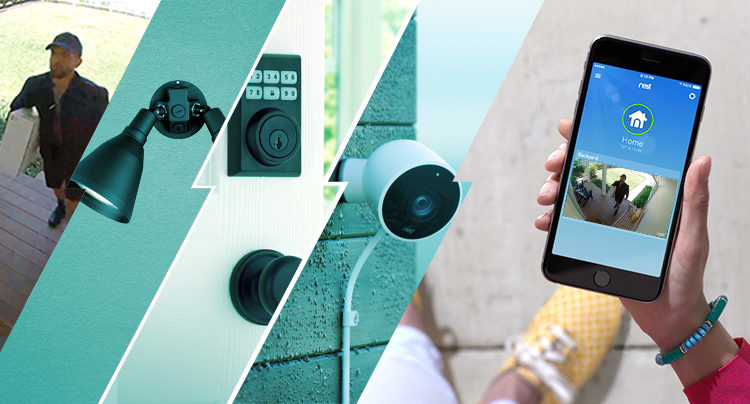
Whether your home is your castle or it’s just the weekday layover between adventures, it should always be safe and waiting for you, just as you left it. There are many ways to help protect your family and your home. Even DIY home security measures can deter threats, from porch pirates to driveway vehicle break-ins.
From the well-known safety tips to the newest in technology, it doesn’t take a lot of extra work on your part to provide you and your family with the peace of mind that comes from a secure home. Check out the best home security tips to get your space secure, year-round.
Protect Your Home and Family
Today’s home security concerns have evolved with the times. The old threats like home burglaries are as prevalent as ever, but porch-theft is a newer problem that is here to stay. Even in the suburbs and rural areas, vehicles in the driveway are at risk, from bored teens to professional reprobates.
Thieves look for anything with a high enough resale value and that looks easy to reach. There are different things you can do, for your own peace of mind, throughout your home and property, to discourage thieves and look secure rather than invite trouble.
A DIY home security approach can be just as effective in some neighborhoods as a monitored home security system from a big-name security company. Every home security system will be different, depending on the specific risks of each situation and neighborhood, but there are basic steps every home can rely on to help improve safety and disaster readiness.
Best Home Security Measures

The best home security system is the one that suits your household’s individual concerns and fits around your family’s lifestyle. Even the world’s most expensive home security system, with motion detectors and HD-quality cameras, will only work when someone remembers to use it. Every home security system should be easy to use daily.
For some, that could mean a wireless smart home security system, and for others it could mean a comprehensive landscape lighting plan and a property fence with a locking gate. The best home security solution will vary, so it’s a good idea to familiarize yourself with the man kinds of options available before you choose the DIY or professional home security system for your property.

Outdoor Security
The most effective home security systems don’t just cover the house. They can include everything from outdoor lighting to the kinds of plants you incorporate into your landscape design. Take a look around your home as you consider your DIY home security upgrade plans to look for places to take action.

The property line is often the best place to start, as it keeps any potential threats further away from your home and family for that added peace of mind. For instance, a good, sturdy fence line will keep unwanted visitors – whether of the human or animal variety – away from your driveway and home. A new fence should not be overlooked when designing your home security solution.
Plan Your Landscape

You can craft your landscape design to support home defense, too. The goal of these landscaping tricks is to make outside access to the window difficult. For first floor windows, a good deterrent is to plant bushes or plants under the windows, particularly those plants that have natural defenses like thorns or sturdy, prickly branches. If you have a low-water landscaping design, a popular and appealing option is to plant cactus under the windows. Whatever you plant near windows and doors, however, keep in mind that it should be small enough that it can’t be used to hide behind or create obstructive shadows.

Another important but often overlooked feature of your DIY home security preparation is the landscape itself. A beautifully landscaped property can be used to help keep the house safer by minimizing or eliminating all potential hiding places. A well-planned out walkway should keep the path between the driveway and the porch clear, easily seen, and free of obstacles that could cause injuries.
Choose the Right Landscape Lighting

Proper landscape lighting for security concerns includes using intentionally positioned outdoor lighting to wash light over trees, bushes, walls, and other landscape features. This is to help ensure they can’t be used to obscure an intruder’s nighttime approach. With landscape lighting, the lights are placed with an eye for aesthetics as well as where they can provide the first layer of outdoor security around your property.
Landscape lighting is often equipped with timers to turn on and off at specific times of day but can also be found in solar options or with motion detectors to respond to the outdoor conditions instead. Solar powered lights are also excellent choices for fence post lighting, or even for pathway lights, all around the yard.
Security Lighting

Closer to the house, brighter security lights can be used. These can be porch lights, or higher-mounted flood lights on the building walls or eaves. They should be bright enough to provide clear visibility at night or during bad weather. Consider pairing them with security cameras and be sure they are not aimed in directions that might obstruct any views or images the security camera may record. Security lights are most often equipped with motion detectors or may be sensitive to daylight or nighttime conditions.
Use a Hide-a-Key
Many homeowners prefer to hide a key somewhere on the property in case of accidental lockouts. Keep in mind that a hidden key gives people access to your home even when your family is secured inside of it, not just when the house is empty. It is especially important to keep a hidden key protected and hard to find unless you already know what to look for and where to look. It might be safer to leave the key with a trusted friend or neighbor, but there are ways to reduce risk when hiding a key.
Don’t put the key under front door mat or in the mailbox. These are well-known hiding places and therefore the first place a stranger would look.
A backyard hiding spot is safer than in the front yard because it is less likely to be discovered. In most cases, the backyard also prevents neighbors or passerby from seeing where the key was retrieved from when the key needs to be used.
There are different hide-a-key products out there to be considered, from magnetic boxes to decorative yard pieces with built-in hiding places. Find the design that works best for your household and be careful that everyone knows not to advertise the location when it’s installed in your yard.
Entry Way Safety Tips

The front porch is for welcoming family and friends into your home, enjoying quiet evenings, or even just collecting the mail. It all depends on your neighborhood and how you use your home. Even in cities and on busy streets, there are security tips you can use to help keep your front porch and entry way safer.
As with landscaping, make sure there are no hiding places on the front porch. Remove any potential obstacles to easy view, from the door or front walk. Trellises, plants, and patio furniture should be arranged to allow easy view of the porch from the door or windows. It is just as important as keeping the walkway clear of yard debris or furniture so that it is easy and safe to use.
Porch Lighting

A key component to maintaining safe visibility on your front porch is your porch lighting. Choose outdoor rated lighting sources, such as outdoor wall sconces or lanterns, that can stand up to all weather conditions. For longer porches, consider recessed, overhead lighting that will light the area without creating glare or shadows.
You can also arrange spotlights to point at the door lock for those days where you arrive home after dark and need the extra light to see by to use the door key. Make sure that all lighting is aimed away from the house and does not interfere with the safe use of your walkways or even the driveway.
Another feature of many porch lighting options is motion detectors or daylight sensors, as well as programable timers so you’re never left in the dark as you approach your home. Smart home lighting solutions to help boost home security are available that allow you to activate or program your porch lighting from an app on a smart device.
Add a Door Viewer
If your front door doesn’t have a door viewer, also known as a peephole, then consider adding one. The viewer provides different angles, from a fish-eye lens to narrow scopes and others, to allow you to safely see what’s on the other side of the door without having to open it first. They are available in a variety of finishes to match the rest of your doorway.
Consider Doorbell Cameras

Another DIY option for home security is more high-tech: doorbell cameras allow you to check your front porch from any cellphone or smart home-connected device. They allow easy viewing and even recording of movement on your porch or driveway. Some brands are also equipped with a microphone and speakers to allow you to talk to a visitor on your porch, even if you are miles away when they come knocking.
Mailboxes & Delivery Lock Boxes

If porch-pirates and mail-thieves are the scourge of your neighborhood, there are security measures you can take to protect your packages and private letters. If your mail is delivered directly to your front porch, consider a wall-mounted mailbox that requires a key to open it to retrieve letters or flat mail. For curbside boxes, you can also consider installing a locking box, but make sure they are metal boxes up to the standards set by the postal service for your area.
Oftentimes, porch theft is committed because it is a convenient opportunity when a passerby sees the mail packages stacked on the front steps. A storage bench can also double as a way to hide packages, as long as you leave instructions for the delivery person so that they know to look for it. Using furniture for temporary mail storage is a good way to hide or obscure the boxes so that they aren’t easily seen from the street.
A common trend due to the rising incidence of porch theft is to place a lockable storage box near your front door but out of the way. These delivery boxes can either include a lock built into the lid or the lock can be placed where the delivery person can place it once the packages are tucked away.
The delivery box can be built against the wall so they are permanent and can’t be picked up by thieves themselves, or they should be weighted and heavy. The lid and lock need to be sturdy enough to take a little abuse, either from the regular wear of the in-and-out of boxes and packages, or from someone trying to break into the box.
Don’t Forget the House Numbers

The address numbers on your house aren’t just for making sure the mail shows up in the right box. The house numbers should be plainly visible from the street to help ensure that guests or even emergency responders, such as paramedics or fire rescue, can arrive quickly when they are needed. It’s best to have the house numbers painted on the curb, or on the roadside mailbox if that’s available to you, but always make sure the numbers are clear on the house itself, too.
In addition to the decorative numbers that can be screwed into the exterior wall, there are other options to help make sure the numbers are seen from the road. Some house numbers light up individually or are designed to be used on a wall-mounted lightbox. It’s also a good idea to make sure the porch light clearly illuminates the house numbers and that there are no decorations placed where they might obscure them.
Secure the Doors

The best home security details are those that are automatic, that you install once and enjoy the security benefits from immediately. The exterior doors of your home fall into this category when looking into your home security updates. An exterior door should be a solid, sturdy, weather-resistant door. However, a home security door is reinforced to stand up to the weather and any other home safety threats, from burglars to the wild and wooly local wildlife. Security doors could be made of metal or solid wood, with metal additions such as strike plates and kick plates to help it stand up to abuse.
Some home security doors are installed like a screen door, on the outside of the door frame, but they latch securely into place and lock with a deadbolt. They allow you an extra layer of protection even if you want the front door open on a sunny day. They keep pets and kids inside just like a screen door, but a home security door is harder to accidentally open.
Use the Deadbolt

On an interior door, a standard latch bolt attached to a doorknob is angled to slide out of the way and passively engage when the door closes. It holds the door closed with just a push instead of having to engage a lock. They are safe and useful inside the home but can be easily tampered with by a savvy trespasser.
With that in mind, all exterior doors around the home should be equipped with a deadbolt lock. These locks are a secondary lock with a solid, sturdy bolt that fits into the door jamb to hold it in place. A deadbolt is squared off to match the fit of the strike box in the jamb and can be installed on standard interior or exterior doors, as well as home security doors with a solid frame to attach to.
Deadbolt locks are not activated by a simple latch bolt and can only lock when moved into place. The bolt must be moved fully in or out of the strike in the jamb using either a key or a turn-lever on the interior side of the lock cylinder. Some deadbolts require a key to be used on both sides of the lock for added security, such as on glass paneled doors.
Other Door Hardware

The strike plates on the door jamb come in varying sizes, materials, and thicknesses which can influence their strength and effectiveness. For instance, a larger strike plate that takes up a longer section of the door frame will be installed using screws in multiple places along the jamb, which helps distribute the force from a break-in attempt if the intruder kicks or rams the door. Even a standard sized strike plate adds an extra layer of security in that the metal plate provides an anchor point for the latch or deadbolt and protects the wood of the door frame from wear and tear of the hardware’s daily use.
Smart Locks

For the modern home security option, there are a variety of electronic or smart home door locks. These smart locks are usually battery operated but they can be triggered by a traditional key in case the power supply runs low. They can be locked or unlocked multiple ways, from the traditional key to a keyless entry or electronic lock. These offer features like a keypad code entry system, or a Bluetooth smart home door lock with proximity sensors that detect the presence of the key nearby and will disengage the lock as the key gets close.
Some locks rely on a Wi-Fi connection and can be locked or unlocked via a smart device app, whether you are standing a foot in front of the door or across town at work and need to unlock the door for a family member who left their keys in the house. Often, smart locks can be set to a timer or schedule, while others can be programmed with multiple codes so that contractors, employees, or friends can be given access to a specific door as needed. This is great during renovations or when you go on vacation and need a house sitter.
Security & Surveillance
When it comes to DIY home security, today’s technology has made it easier than ever to keep close tabs on your home and property. With a few additions and modifications around the house, you can accomplish the same level of wireless home security as you could find with some professional systems. It can be as simple as adding locks or curtains to the windows, or as technical as a new wireless home security system with a network of smart devices.
Obscure windows

For windows that face the street, in addition to using the latches and window locks, consider taking steps to obscure the view from outside looking in. There are ways to do this without obstructing your view of the world. A sturdy screen on the outside of the windows can help with making it harder to see inside and offers the obvious feature of keeping out pests.
One option is to darken or mirror the windows with a specialized tinting film. These can be professionally applied or can be purchased as a customizable window cling that you can install yourself. Window films come in a variety of colors and patterns, so try to look for designs that will only be seen from the outside of the window and will not be in the way of your view looking out.
Coordinate Your Indoor Lighting

With the advantages of smart home lighting, not only do you get a higher quality of light for your indoor tasks every day, but the entire system can be setup to help keep your home safe even when you aren’t there. A smart lighting system syncs the operation of the lights in a room to a smart app or other hub device to allow you to customize and control the light environment. This could mean dimming the lights, changing the colors of the lights, or even turning them on or off.
When you go on vacation, a smart lighting system allows you to set the lights in the house to turn on at various times a day, for random lengths of time, so that anyone observing the home from the street would assume the home is occupied. It’s better to set the lights to different times and not on a predictable pattern if you intend to be away for a longer vacation.
Smart home lighting systems work to improve the overall security of your home every day, not just when you’re on vacation. Some indoor smart lighting solutions include motion sensors for added safety, for instance adding a motion sensor to the hallway or bathroom light switch. They can be programmed to create a visual, lighted alert when a phone rings or notify you of someone ringing the front doorbell.
With a Wi-Fi setup, you can also access the lighting system from anywhere using a smart phone app, so you can turn on the porch or entryway lights if you’re out on errands when the sun goes down. Just make sure to coordinate the lighting system with the settings on any monitoring devices, such as a security camera, to be sure the lighting improves the image and doesn’t otherwise interfere with the signals between the technology in use.
DIY Security Cameras

For those who love to go high-tech and those who want to create a user-friendly home security system, consider pairing security cameras with a smart home integration system. Networked cameras are certainly an option in today’s market for commercial and private home use, while app-based alternatives are often ready to set in place and operate right out of the box.
Security cameras & sensors can be set up outside, in areas such as the front porch, or at the garage door to pick up any activity around the driveway. They can also be placed inside the home, such as in the foyer, aimed at the door to make sure anyone who enters is on the guest list. Smart home security cameras should be placed where they can catch a clear view of anyone entering a doorway, whether that’s the front door or even the patio doors.
There are security cameras that can act as motion detectors that alert you via smart device when the cameras detect movement outside of expected hours. Make sure to note if the cameras are weatherproof and only place them where it is safe to do so. A camera that has been fried out by the rain won’t help much when you need it. Install the cameras so that they are not interfered with by any outdoor lighting sources that may obscure the pictures that are captured.
In-Home Security Measures
Be careful not to overlook the most basic home safety measures while you’re considering an upgrade to the home security system. Make sure that your home has the necessary number of smoke alarms and carbon monoxide alarms to keep your family safe from those threats that may come from accidents within the house.
Smoke & safety detectors should be placed on every level of the home and should thoroughly cover the sleeping areas, with a smoke alarm in every bedroom and hallway. For more information, we put together this guide to help you choose the best smoke detector.
Have a plan to test the smoke alarms regularly to be sure the batteries are still good, depending on the type of detectors you choose. The alarms should be kept clear of dust to be sure the sensors are in working order. It’s also a good idea to have a plan for what to do in the case of an emergency, such as a smoke alarm, and to regularly go over the plan with everyone in the household.
Other home monitoring systems can be setup for smart home integrated security. Look for smart home thermostats to give you more direct control of your home’s heating and air conditioning use, and to track your energy use to help keep the monthly electric bill lower. Customizing your home HVAC use from your cell phone or smart hub helps ensure the system is only running when someone is home to enjoy it.
You can also find additional in-home security sensors for your kitchen or bathroom that will monitor your plumbing fixtures for leaks, and even notify your smart device. These monitors help prevent water damage under the sinks or across the floors. Smart home security systems are there to make your life more comfortable as well as more secure.
Smart Home Security

Today’s technology puts the best home security features right at your fingertips with smart home integration that delivers real-time updates to your cellphone or chosen smart devices. A smart home security system can be synced through a central smart hub and works off your home’s Wi-Fi network.
The individual features of your smart home security system can be customized to your specific household lifestyle and safety concerns. As with smart appliances in the kitchen or laundry room, smart home integration for your lighting, security cameras, or even your smoke detectors is designed to make your life easier and more coordinated.
Smart Hub & Apps Control

No matter the type of security tech you need for your home, there’s probably an app for that. The advantage of smart home integration with your home security system is that multiple security resources can be monitored from any smart device.
This could mean your cell phone apps allow you to check on the porch lights from across town, or it could mean that the Alexa or Google Home speaker in the living room can be used to change the lighting via simple voice commands. The devices will depend on the technology you choose, whether it is designed for Bluetooth or Wi-Fi networks, but there’s a wide variety of choice when it comes to finding technology that will work with the smart hub devices you already own.
The Safety of Smart Home Security
People often ask if smart home security options are really a safe and effective system, given the required connection to the internet. The answer is that home networks are safe because you can take active steps to protect your wireless home security system from risk of digital attack. The best part is that these are steps you should have in place for any home network, so your home may already be ready for a smart home system.
When considering securing a home network for a smart home integrated security system, it is very important that you don’t share your network information with anyone outside of your household. For guests, set up a dedicated access account that has limited permissions. That allows them to still access the internet from your home without having to give out your main account password.
Every smart device should require a password. You should also change the passwords regularly, and never reuse a password. Longer passwords are more secure. Use the multifactor authentication options when connecting to your accounts for an added layer of protection. It is also a good idea to never access your home security system from a public or unsecured internet connection to help protect those passwords.
It is important to keep all smart devices on the network updated promptly, as updates become available. This will ensure that all known bugs are defended against and removed as soon as possible. Look into antivirus or malware software to protect your smart devices and keep it up to date.
Lock Your Network

The first step in protecting your smart home security system is to lock your internet network so that only people with the password can access it. Your home Wi-Fi network has the possibility of broadcasting outside the confines of your home depending on the strength of the signal so you should never trust that a neighbor can’t access your internet.
Other considerations when securing the network include:
- Your network should be behind a firewall.
- Use secured wireless routers that are equipped with the protection of a WPA or WPA2 encryption.
- Rename your home network to something unique and that, ideally, doesn’t announce your router information, your name, or your address in the home network name.
- Remember to secure all devices on the network, including your printer and smart devices.
Another good protection for your household network is to use the parental controls available to you. These can help prevent pop-up ads and keep users from navigating to harmful pages that could give hackers access to your network through their compromised computer system.
The initial setup for a secure network can be complicated if you’re not already familiar with firewalls and encryption software options. It may be worth it to bring in the local tech experts on a project like setting up a new, secure network that meets the demands of your planned home security system. Once the network is installed and set up, however, they should be easy to maintain yourself going forward.
Home Security Tips
Once you have your home set up and as safe as you can plan for, there are a few more tips and tricks to turn into habits that will boost your daily security around the house.
- Lock the windows when they aren’t open for the breeze.
- Never leave the windows or doors open or unlocked when no one is home.
- Lock the doors, even when the household is secure inside.
- Check the mailbox daily to prevent mail theft.
- Don’t let the newspapers stack up on the driveway or porch.
- Keep the walkways and driveway clear of leaves and weeds.
- Put the trash cans out regularly and retrieve them the same day.
- Keep the property maintained, from mowing the lawn to the weeding.
- Regularly make sure all security lighting or cameras are in working order.
- Promptly replace lightbulbs in exterior light fixtures.
Even when you’re at home, these little things being forgotten or overlooked can create the impression that the house is empty. An empty home is an easy target for threats, so it’s important to keep these areas maintained and safe to use. When you travel, a house sitter can help keep the home looking lived in.
It’s a good idea to know who your neighbors are and what the usual routines are so that it’s easier to spot traffic that is out of place. The important thing is to know your property and identify ways to minimize opportunities for theft and unexpected visitors. These are just a few tips on how to build your own safe habits to help ensure your home security system is as effective as possible toward providing you with many years of safety and peace of mind.


